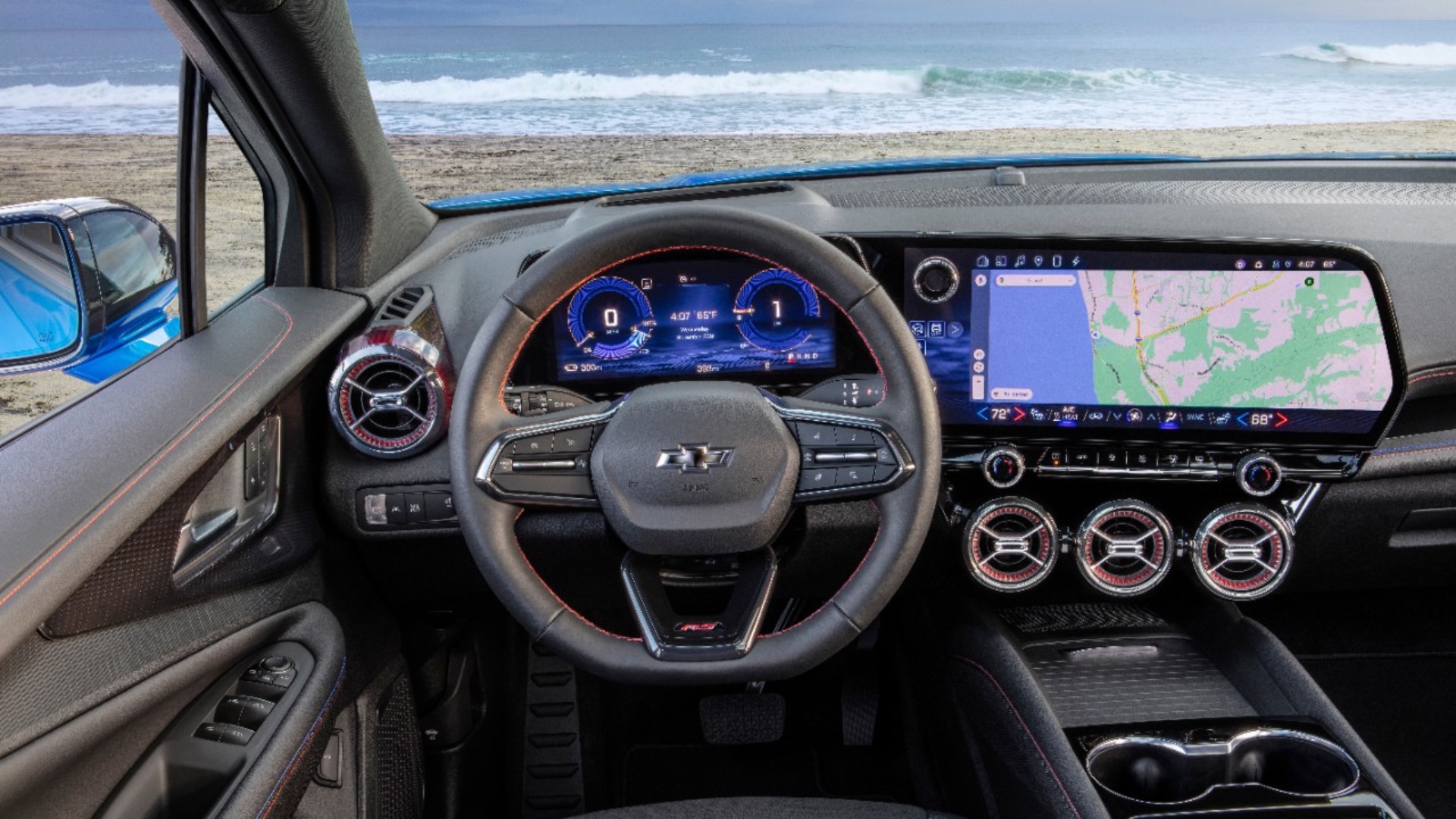GM's plan to ditch CarPlay and use its own infotainment system has so far been eventful and for all the wrong reasons — it doesn't work
GM's replacement for Apple CarPlay could be going better.

General Motors, or GM to its friends, caused quite the stir earlier this year when it confirmed that it planned to ditch CarPlay and use its own infotainment system instead. That new system runs on Google's Android system and has dedicated apps for accessing services rather than allowing iPhone owners to plug their phone in and use CarPlay instead. Cars with the new system are starting to be tested and the early indications aren't great.
The Chevrolet Blazer EV is the vehicle that is currently acting as a guinea pig for the infotainment system is now in the hands of journalists across America and they've started to share details about how they are getting on. And the early reports aren't great, particularly when it comes to, you guessed it. That new infotainment system.
In fact, there are multiple reports that the system simply doesn't work, restarting itself regularly and finding itself in a bootloop situation that there is no easy way to fix. Far from ideal, and definitely something that Apple will want to avoid if and when it ever ships the Apple Car.
Stranded journalists
There are two particularly damning reports that will be of interest to potential Blazer EV buyers, especially those who are curious how the infotainment system holds up sans CarPlay. 9to5Mac was the first to spot reports from Inside EVs and Edmunds, with the former telling a tale that will be particularly worrisome to anyone who reads it.
"Initially, the Blazer EV was just fine," Kevin Williams writes. "But about 25 minutes outside of Gallipolis, there was a quick pause in the Bluetooth audio, and then the whole infotainment screen went blank." Things didn't get better from there.
"The heating, AC, and volume controls still worked, but all of the icons were missing. The gauge cluster’s Google Maps integration still showed my location, and I still had speed and range, so I figured the car was okay, and this was just a glitch."
Unfortunately, it was not a glitch. The report goes on to explain that there was no real way to get things fixed at the side of the road, and the vehicle even did its best to strand its driver by preventing them from finding the charger they needed to progress.
iMore offers spot-on advice and guidance from our team of experts, with decades of Apple device experience to lean on. Learn more with iMore!
"I contemplated turning around and calling it quits. However, I would need to DC fast charge anyway to get home, and I was so close to my first DC fast charging stop. It just made more sense to continue. The reset had also removed the directions I needed to get to the Gallipolis fast charging station. To add insult to injury, there was no way to input directions again because the main infotainment screen wasn’t working." But as if it was destined to, an iPhone saved the day. "I hastily plugged the address into my phone, and perched the phone near the vents, navigating to the DC fast charging stations via the tiny screen of my old iPhone."
That's a terrible tale, and Edmunds tells a similar story of the software restarting itself over and over before righting itself. Only to have another meltdown an hour later.
An avoidable problem
It's of course fair to say that any software running under CarPlay could have these problems, and carmakers aren't known for their software prowess. But GM went this route to avoid CarPlay and use its own system that has so far proven to be pretty terrible for some drivers.
The irony of an iPhone coming to the rescue won't be missed by many. We can surely expect GM to improve matters — it has to — but this could all have been avoided if GM had stuck to software that works. And let people use CarPlay, too.
More from iMore

Oliver Haslam has written about Apple and the wider technology business for more than a decade with bylines on How-To Geek, PC Mag, iDownloadBlog, and many more. He has also been published in print for Macworld, including cover stories. At iMore, Oliver is involved in daily news coverage and, not being short of opinions, has been known to 'explain' those thoughts in more detail, too.
Having grown up using PCs and spending far too much money on graphics card and flashy RAM, Oliver switched to the Mac with a G5 iMac and hasn't looked back. Since then he's seen the growth of the smartphone world, backed by iPhone, and new product categories come and go. Current expertise includes iOS, macOS, streaming services, and pretty much anything that has a battery or plugs into a wall. Oliver also covers mobile gaming for iMore, with Apple Arcade a particular focus. He's been gaming since the Atari 2600 days and still struggles to comprehend the fact he can play console quality titles on his pocket computer.
